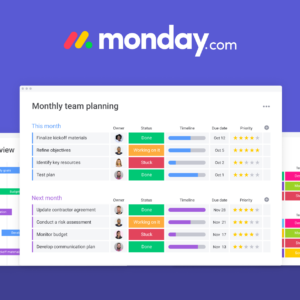August 29, 2016, marks the 11th anniversary of Hurricane Katrina. It is known as one of the costliest, deadliest hurricanes in recorded history. Many lessons were learned from this disaster of epic proportions.
Disasters come in many forms – fire, flood, wind, theft, data breaches, stock market crashes. Even the unexpected loss of a family member, key client, colleague or business partner can be catastrophic.
Unfortunately, both man-made and natural disasters are increasing in both frequency and intensity. They serve as constant reminders that no one individual, business or organization is immune from them.
This is why having disaster recovery processes for your business along with a personal emergency preparedness & response plan is something you should strongly consider having in place.
This recently became a reality for many of my family members and businesses affected by the “1000-year” flash flood in Baton Rouge, LA in mid August 2016.
When facing a man-made or natural disaster, you will find that using a combination of high tech and high touch skills, tools and instincts will ensure your survival and recovery.
Here are 11 practical, low-cost tips that both small businesses (and individuals) can use in preparing for and recovering from a disaster:
[mk_title_box color=”#ffffff” highlight_color=”#37a61e” highlight_opacity=”0.9″ size=”18″ line_height=”34″ font_weight=”inherit” margin_top=”0″ margin_bottom=”0″ font_family=”none” align=”left”]Tip 1: Get a Smart Phone ASAP[/mk_title_box]
This may seem like a no-brainer, but there actually are still people who do not use smart phones for mobile communication. Smart phones are like mini computers. During a disaster, your smart phone can prove to be one of the few lifelines you have (as long as you can keep the battery charged). Even if you lose electricity and cannot charge your phone or your phone is lost or stolen, you can still access the information stored on your phone through a cloud repository. Your phone needs to become your BFF – don’t leave home without it!
[mk_title_box color=”#ffffff” highlight_color=”#37a61e” highlight_opacity=”0.9″ size=”18″ line_height=”34″ font_weight=”inherit” margin_top=”0″ margin_bottom=”0″ font_family=”none” align=”left”]Tip 2: Take Digital Pictures of Identify Verification Information[/mk_title_box]
When disaster strikes, rest assured you will have to prove your identity and ownership of whatever you lay claim to. Take digital pictures now of your office and its valuable contents, your tangible assets, licenses, certifications and other identity verification information. Keep a copy stored on your smart phone as well as in a cloud storage system.
[mk_title_box color=”#ffffff” highlight_color=”#37a61e” highlight_opacity=”0.9″ size=”18″ line_height=”34″ font_weight=”inherit” margin_top=”0″ margin_bottom=”0″ font_family=”none” align=”left”]Tip 3: Download a Group Texting App[/mk_title_box]
Download a group texting app like GroupMe or Signal to Your Smart Phone – texting may be your only communication option during a natural disaster as cell towers are disrupted making it impossible to make phone calls. A group texting app allows for efficient communication to key contacts during times of emergency.
[mk_title_box color=”#ffffff” highlight_color=”#37a61e” highlight_opacity=”0.9″ size=”18″ line_height=”34″ font_weight=”inherit” margin_top=”0″ margin_bottom=”0″ font_family=”none” align=”left”]Tip 4: Scan and Encrypt Important Documents[/mk_title_box]
This could serve as the primary or backup plan to securing a digital copy of important paperwork. Whether you scan a document and save it to a cloud-based repository or if you take a photograph of a document, be sure to encrypt the document. This will make it difficult to steal information from the document.
[mk_title_box color=”#ffffff” highlight_color=”#37a61e” highlight_opacity=”0.9″ size=”18″ line_height=”12″ font_weight=”inherit” margin_top=”0″ margin_bottom=”0″ font_family=”none” align=”left”]Tip 5: Store Important Files in the Cloud[/mk_title_box]
This means store those photographs and scanned documents (from the previous tips) into a web-based application that is accessible anywhere in the world. The great thing about smart phones in times of emergency is that the information stored on the phone is backed up into a cloud solution. Examples of cloud solutions include: Google Drive, iCloud, Dropbox, Evernote and Sharepoint.
[mk_title_box color=”#ffffff” highlight_color=”#37a61e” highlight_opacity=”0.9″ size=”18″ line_height=”34″ font_weight=”inherit” margin_top=”0″ margin_bottom=”18″ font_family=”none” align=”left”]Tip 6: Leverage Emergency Contacts[/mk_title_box]
Have emergency contacts strategically placed throughout your city, country as well as internationally (if possible). Create a special listing of phone numbers in your phone and mark as “ICE” (In Case of Emergency), VIP or Emergency. In the midst of a crisis you may have to rely heavily on contacts that conduct business outside of your town or city.
[mk_title_box color=”#ffffff” highlight_color=”#37a61e” highlight_opacity=”0.9″ size=”18″ line_height=”34″ font_weight=”inherit” margin_top=”0″ margin_bottom=”18″ font_family=”none” align=”left”]Tip 7: Memorize Key Account Numbers, Logins and Phone Numbers[/mk_title_box]
This tip is particularly handy when you lose, whether temporarily or permanently, important account numbers, login credentials, and phone numbers. By memorizing these numbers you have a better and quicker chance of recovering information needed to prove your identity and ownership.
[mk_title_box color=”#ffffff” highlight_color=”#37a61e” highlight_opacity=”0.9″ size=”18″ line_height=”34″ font_weight=”inherit” margin_top=”0″ margin_bottom=”18″ font_family=”none” align=”left”]Tip 8: Conduct a FMEA on Key Processes[/mk_title_box]
Document your company’s core processes. Then conduct a Failure, Mode and Effects Analysis (FMEA) on each process. Going through this exercise will help you and your team figure out all of the things that can prevent the successful execution of your process and develop mitigation plans.
[mk_title_box color=”#ffffff” highlight_color=”#37a61e” highlight_opacity=”0.9″ size=”18″ line_height=”34″ font_weight=”inherit” margin_top=”0″ margin_bottom=”18″ font_family=”none” align=”left”]Tip 9: Invest in Trailers and Generators[/mk_title_box]
In this digital age, system malfunctions can shut a business completely down. Invest in disaster recovery and business continuity services that offer trailers designed to replicate your office and its systems within a 24-48 hour period. Generators can provide a temporary source of power in the event of electrical outage.
[mk_title_box color=”#ffffff” highlight_color=”#37a61e” highlight_opacity=”0.9″ size=”18″ line_height=”34″ font_weight=”inherit” margin_top=”0″ margin_bottom=”18″ font_family=”none” align=”left”]Tip 10: Know the Location of Schools, Hospitals, Fire Stations and Police Stations[/mk_title_box]
If your office is not located in the general vicinity of where you live, then you should take the time to find out the location of the nearest schools, hospitals, fire stations and police stations. In times of emergency, these places and the people who work in them serve as first responders not to mention evacuation hubs.
[mk_title_box color=”#ffffff” highlight_color=”#37a61e” highlight_opacity=”0.9″ size=”18″ line_height=”34″ font_weight=”inherit” margin_top=”0″ margin_bottom=”18″ font_family=”none” align=”left”]Tip 11: Lawyer Up[/mk_title_box]
The aftermath of a disaster often involves property protection. Whether your property is intellectual or physical, make sure you have attorneys that you can call on to help you. This also includes having the appropriate business insurances in place in the event you have to make a claim.
Perhaps the most important tip in recovering from a disaster is to seek therapy or crisis counseling.
Oftentimes, the aftermath of a disaster proves more damaging than the actual disaster itself. Having emergency tools in place does not reduce the risk of disaster but it can ensure a shorter recovery time.
Hopefully if you find yourself facing disaster, you too will find a way to see beyond the devastation. As bad as the situation may seem, try to look for the flower growing amidst the chaos – I guarantee you it’s there!











